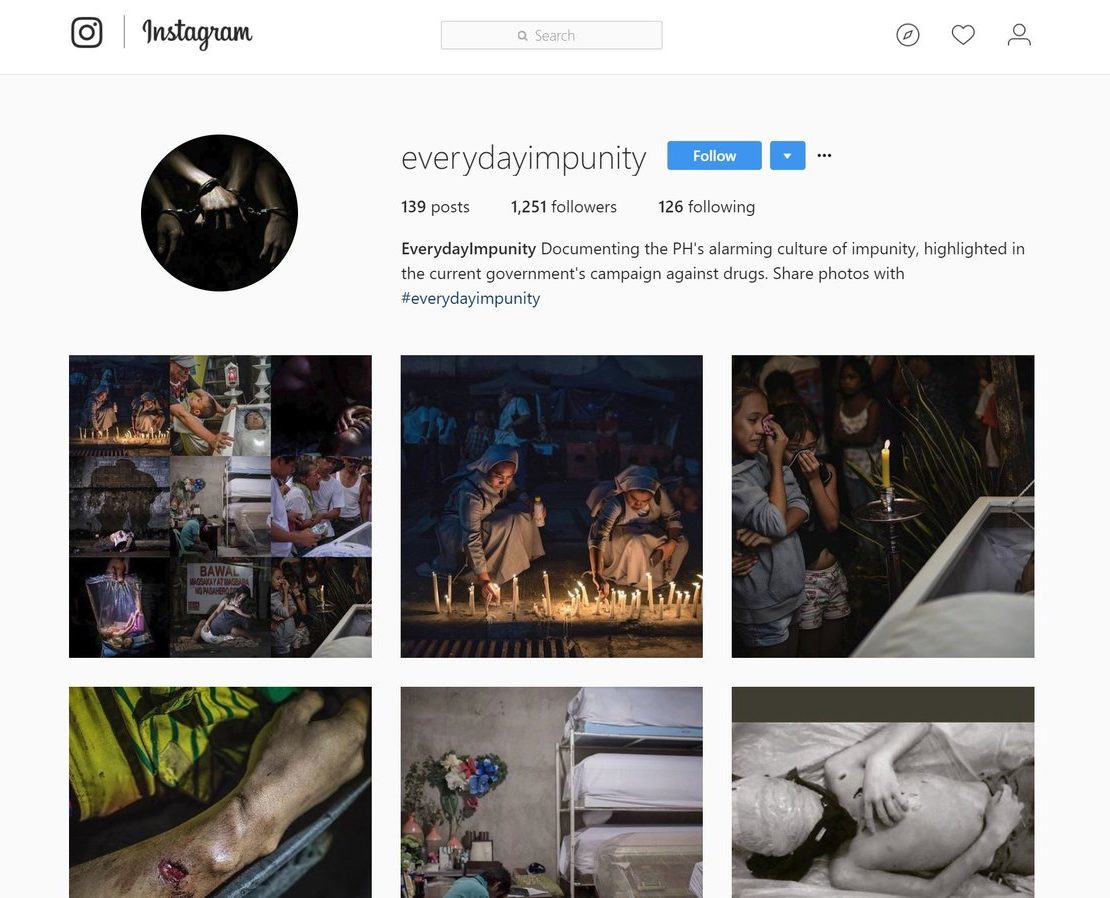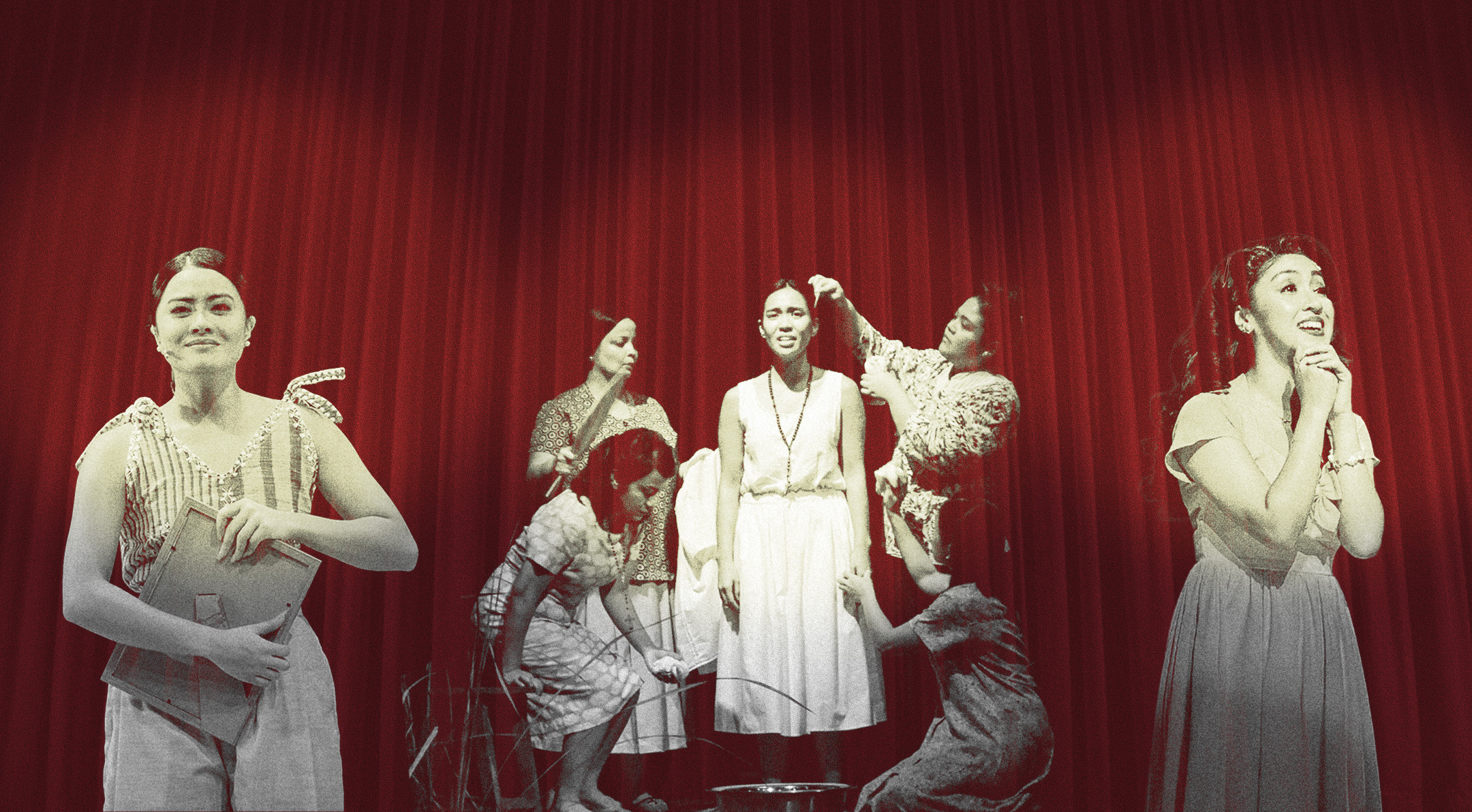EverydayImpunity is an Instagram account that documents “the Philippine’s alarming culture of impunity” and highlights the war on drugs
Oplan Tokhang—the Duterte administration’s flagship campaign against illegal drugs—has recently resumed after a three-month break, and its so far bloodless return is indeed a victory for both human rights advocates and the current government.
Today, we revisit the reason why concerned citizens clamored for more humane anti-drug operations, with the help of an Instagram account that is “documenting the PH’s alarming culture of impunity, highlighted in the current government’s campaign against drugs.”
A post shared by EverydayImpunity (@everydayimpunity) on Jan 2, 2018 at 8:33am PST
Created by a group of photojournalists who’ve spent the past two years covering the drug war, the IG account is pretty straightforward. It’s called EverydayImpunity and yes, it has photos that vividly depict the aftermath of countless anti-drug operations carried out since Oplan Tokhang was launched in 2016.
Fair warning: The images uploaded on EverydayImpunity are definitely sobering, and some may consider them too graphic for a social media platform that is easily accessed online. But then again, when these killings happened, nobody shielded the eyes of civilians and bystanders who came across the gruesome evidence.
We talk to one of the creators of EverydayImpunity, photojournalist Jes Aznar (co-founder of IG page EverydayPhilippines and a regular contributor for The New York Times), on why they felt the need to migrate their reportage to social media.
A post shared by EverydayImpunity (@everydayimpunity) on Jul 24, 2017 at 6:51pm PDT
When did EverydayImpunity begin? Who is the mind/are the minds behind EverydayImpunity and what urged you to put up the account?
When I and two other photographer friends set up the Everyday Philippines page on Instagram in 2015, we were already talking of helping set up or start new niche Instagram pages, particularly highlighting the Philippines. To date, @everydaydavao and @everydaymindanao [are] already being published by friends, as we encourage more to join the community. We are already part of the @everyday global community that started in Africa to show photographically, the everyday life in the continent far from cliche and stereotypes. There are so many underreported issues and stories in the Philippines that we are currently covering and we thought that by setting up an Instagram page, we can show and share those stories to the millions of subscribers of the @everyday network worldwide.
The same goes [with] Everyday Impunity. Although the issue of the killings and extrajudicial killings have caught the attention of publications all over the world, continuous coverage and exposure on the issue is important. Especially in the Philippines where newspapers have limited space and ads are sometimes more important than content. At the same time, there’s a small number of photographers and journalists who continuously cover the killings, so we need a platform. Since most of those who religiously cover the issue are good photographers, Instagram is a natural choice.
Since the start of [2017], I was talking about the potential of an Instagram page to continuously publish photos of the atrocities and the culture of impunity in the country with the group of photographers, including Raffy Lerma, who recently got an award of distinction for his coverage on the drug wars, and Carlo Gabuco, who is also doing a long-term coverage on the topic.
A post shared by EverydayImpunity (@everydayimpunity) on Nov 6, 2017 at 12:39am PST
Why did you choose Instagram as your platform?
We are photographers. Ours is a visual product, so Instagram is a natural choice. On Instagram, you have a captured audience, the subscribers, and as with all other social media platforms, it can be shared easily to other platforms.
What’s the goal of EverydayImpunity? What’s the message that you want to send to audiences?
As photojournalists, Everyday Impunity follows the tradition of what good photo reportage should be. Aesthetics play a big role in the presentation of the photos, but the message should be concise and factual. In covering injustices like these, it is easy to be emotional and get carried away, but the posts should always stick to the truth. The message should be clear, that this is really happening in the country, and that the victims are real people and not just numbers. The page is just there to show the reality, no more, no less. What the audience do afterwards with the visuals and information they see is solely up to them.
A post shared by EverydayImpunity (@everydayimpunity) on Sep 6, 2017 at 9:08pm PDT
Some people think that showing these photos on social media is too graphic. On the other hand, there are those who would say that you are, in a way, desensitizing the public to the horrors of extrajudicial killings (EJKs) by making the images too accessible. What can you say about this?
The Filipinos are already desensitized, as much as we want to ignore the fact. We have been living in violence, human rights abuse, militarization, and impunity for a very long time since the presidency of the late dictator Marcos.
There are images of course that are too graphic to publish, but in this case, these victims need indignation. The manner of their demise should be known, their death given justice, and to help their family find closure if these cases are solved.
Also, these photos are testaments of the reality of what is happening and the level of impunity in the Philippines. The number of victims posted on the page is already a very strong statement.
The page is just there to show the reality, no more, no less. What the audience do afterwards with the visuals and information they see is solely up to them
What’s the most challenging aspect of covering the drug war?
Covering the killings means you have to teach your body and mind to adapt to waking up at night and sleep during the day. But there are also days that you have to cover the killings, and the funerals, and the interviews of families during the days as well. But it is not only physical. You also have to deal with the mental and psychological challenges. Seeing death and extreme sorrow every day and every night will definitely take a toll on you.
What’s one scene from the EJKs that haunts you to this day?
Every single case of killings will haunt you. Every picture and narrative of how they were killed and the circumstances surrounding it will break your spirit and question the very foundation of the humanity of this country. They all stand out. One death is too many.
A post shared by EverydayImpunity (@everydayimpunity) on Nov 4, 2017 at 10:04pm PDT
What do you think is the best way to eradicate the country’s drug problem?
We cannot give a specific answer to this. There are experts who should be conducting studies on this, or at least read the extensive studies of other countries to apply here. Also, we have the government who is supposedly be working to give the people a solution to the country’s problems according to our constitution. But living in this country, that has been marred in poverty, massive corruption, and a system that only works to serve those in power, wouldn’t it be more sensible to work on fixing the root of the problem instead of focusing only on the effects? If an effective, efficient, and honest justice system is in place, nobody would be breaking the law because the people will support and understand it, rather than just being afraid of it.
A post shared by EverydayImpunity (@everydayimpunity) on Jul 29, 2017 at 4:06am PDT










































